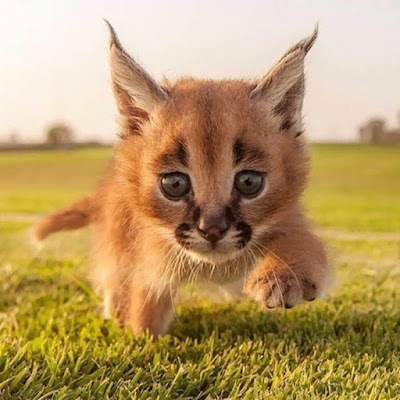Baby caracal cats are quite possibly the most beautiful felines on the planet.

This wild feline species are also known as the Egyptian lynx due to its physical similarities to the lynx.
They come from Africa, the Middle East, and The Indian subcontinent.

Adults can weigh up to 18kgs (40lbs) and run at speeds of up to 50mph.
Just like an ordinary house cat, but with a slight difference, right?

Today, only one species of the genus caracal lives and they aren’t listed as threatened.

Their extraordinary ears have over 20 muscles each, that all swivel around like a satellite dish in order to detect the sounds of their prey.
The tufts may help in enhancing sound going int. Or it can also be used to communicate with other caracals via twitches and other movements.

Often referred to as the desert lynx, the Caracal does not actually possess the same physical attributes of other members of the lynx family, such as the characteristic ruff of hair around the face.

Instead, it has a short, dense coat, usually, a uniform tawny-brown to brick-red.

It is the largest member of Africa’s small cats and is definitely the most feared.

Males weigh in at as much as 40 pounds, and females as much as 35.

They stand between 16-20 inches at the shoulder, and are 35-39 inches long.

Caracal cats prefer to live in the drier savannah and woodland regions of sub-Saharan Africa, and prefer the more scrubby, arid habitats.

They have been known to also inhabit evergreen and montane forests, but are not found in tropical rain forests.

After a gestation period of around 78-81 days, females tend to produce a litter of 1-4 kittens, with 2 being the average.

Kittens open their eyes on their first day of life, but it takes 6-10 days for them to be completely open.

They attain sexual maturity between 12-16 months. In captivity, Caracal cats have lived up to 19 years.

Caracal cats have a wide variety of prey, with the most common being rodents, hares, hyraxes, and small antelope.

Unlike most other small African cats, Caracal cats will not hesitate to kill prey larger than themselves, such as adult springbok or young Kudu.











